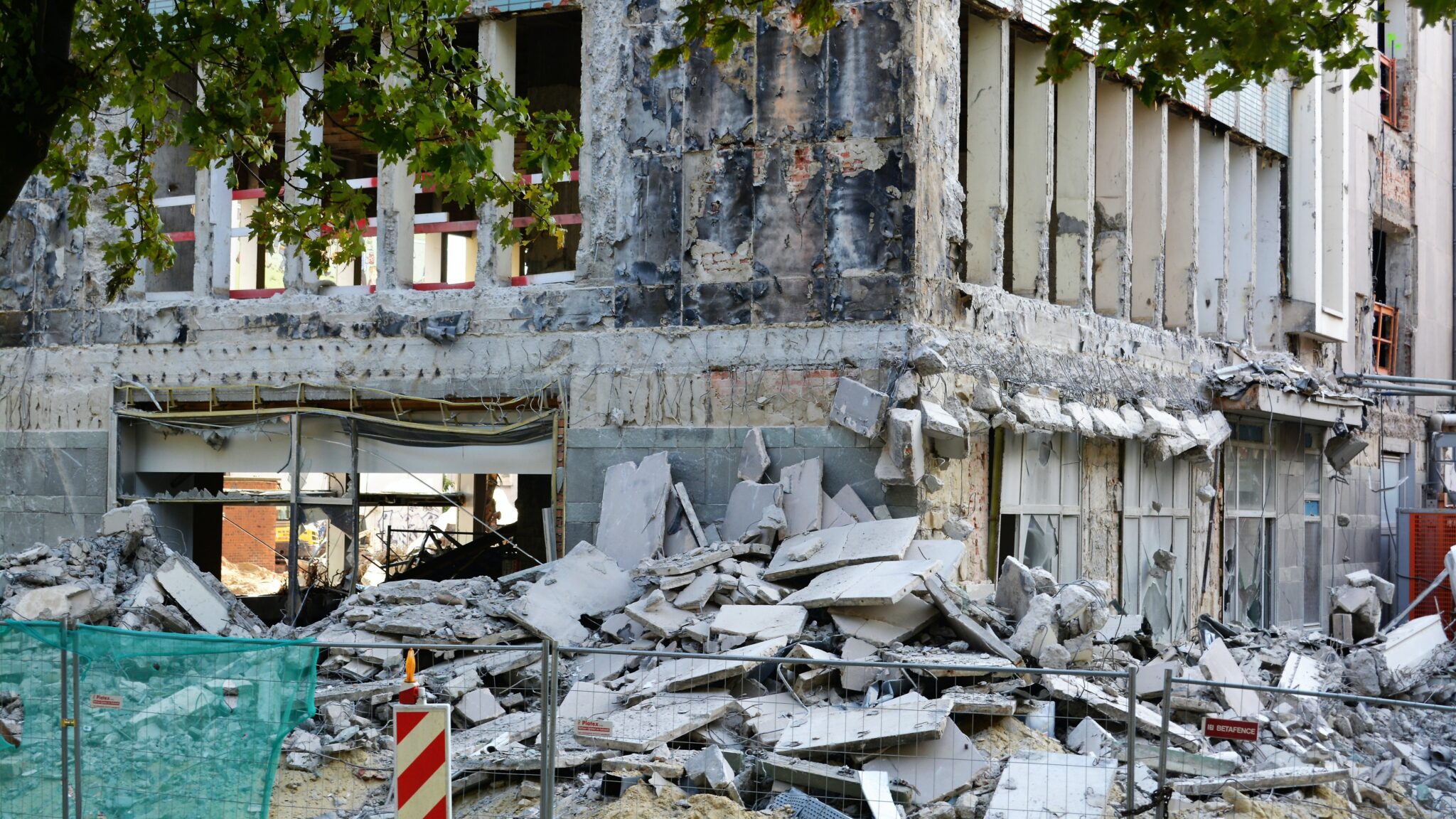Living in a fast-paced digital world equipped with artificial intelligence and machine learning comes with many pros and cons. However, it is undeniable that technology does offer a solution to almost every problem, to the extent that it now can fight nature.
The leading cause of destructions in the world for the past years is natural disasters, including storms, heatwaves, floods, wildfires, and earthquakes. According to a rough estimate, natural disasters caused losses of $131.7 billion in 2018, affecting the lives of millions around the world. With the empirical advancement in technology over the years, it has now become more accessible for the agencies and rescue teams to fast track the locations and conduct rescue operations worldwide, enabling them to play an influential role in disaster relief aid.
Robots, including drones, have an admirable potency to make the rescue easy as the technology can go where human can’t; can access damage in real-time and deliver services accordingly in less time and at a lower price.
Let us look at the innovative pieces of technology that effectively bring digital solutions in the humanitarian sector, impacting humanitarian relief and counteracting the natural disasters that have been costing us lives for years.
Land Slides and Earthquakes
Recent technology has developed at the Cornell University, capable of forecasting the plate tectonic motion of lower intensity lasts for hours or days, called “slow-slip earthquakes.”
SERVAL PROJECT is another mighty development in response to the Haiti earthquake. The technology has been in use since 2010. It allows mobiles to communicate with each other even in a no-network coverage area using the TERA (Trilogy Emergency Relief Application) designed SMS text system.
NASA Finder, a suitcase-size device, was developed in response to the 2015 Nepal earthquake. This device can detect human heartbeats under 20 ft of solid concrete and 30 ft of rubble.
The earthquake early-warning system is also in the process of development by the U.S. Geological survey. This system will be a groundbreaking technology as it uses a network of high-quality ground motion sensors.
Storms
Data statistics show that 90% of all-natural disasters are weather-related. To reduce the massive loss of life, technology has to offer something extraordinary other than the old radar technology used in World War II to better anticipate weather forecasting.

Kevin Petty, director of Science & Forecast Operations from The Weather Company, a subsidiary of IBM, said in an interview.
“One of the key things that we are always looking to do is to enhance prediction of weather globally to reduce those impacts that it has on the population, allowing populations to be more resilient in the face of high impact weather.”
Promising algorithms will be available soon, capable of fast and accurate hand in-depth analysis of data coming from multiple domains, such as geophysics, from the atmosphere, ocean, or the biosphere.
Extreme Temperature
Heatwave is not only detrimental to human life, but it also has the potency to elate economic spending, affect agricultural production, energy, and infrastructure. Predicting extreme temperature is becoming increasingly important as it has broad-scale effects. Advanced forecasting models are in practice these days to assess the onset, duration, and demise of an upcoming heatwave. Indian Institute of Tropical Meteorology also developed a model encompassing a complex algorithm that can identify problematic regions and predict a rise in temperatures that can pose risks.
Another mystic model has been developed at the National Centre for Atmosphere Research for wildfire prediction. The system simulates how weather drives fires and how fires impact climate. Scientists can regularly update forecasts by restarting the model every 12 hours with the latest observed data.
Floods
Massive flooding caused by natural causes, such as increased rainfall or storms, has been reported in Nepal, Myanmar, China, Bangladesh, and Pakistan, forcing millions of residents out of their homes.
But technology has equipped us with such forecasting models that can better analyze the data and automatically alert the authorities beforehand. A flood forecasting model was implemented by Google in September 2019 in the Indian region of Patna. Google has collaborated with several on-ground companies to provide real-time data.
An inundation model has been built by the U.S tech giant built can forecast flash flooding by assessing the water behavior through prediction of water level rise in a particular area. A highly detailed computer model uses radar and advanced streamflow computer simulations to provide specific guidance for decision-makers during the crucial 1 to 12- Hour window.
Epidemics
AI-enabled forecasting models can be used to identify hot spots of an emerging disease and its spread rate and trend. Health care reports are correlated with environmental data such as soil components, a rise in temperature or humidity – all factors that can help the disease spread rapidly. The path of a specific insect that transmits disease can also be tracked using satellite imagery.
Role of Social Media in Disaster Communications

Online Applications for Disaster Relief Aid
Micromappers, launched in 2013, is a world-renounced application for its effective contribution to the 2015 Nepal earthquake. Micromappers processed over 60,000 images and tweets during the 2015 Nepal earthquake. This application works by creating a map from social media relief updates and forwarding it to the aid agencies that get real-time updates from affected areas. Micromappers assist the concerned organizations in planning effectively before stepping into the disaster zone.
Google people finder is another innovative open source technology developed in response to the Haiti earthquake in 2010. This application is available in over 40 languages, and it allows users to search and post for the status of people affected by a disaster.
Red Cross emergency app is a handy application with the credit of saving several lives in the United States. This application is a very reliable source for giving weather updates, preparedness information, and safety tips.
Pakistan Disaster Management Strategy
Pakistan has had its fair share of disasters in the past 14 years in earthquakes, floods, and storms. And just like how its people stood firm in the face of every adversity that came in their way, they showed incredible resilience to cope with the natural disasters. But the management of catastrophe is highly dependent on the efficacy of governance, and for this purpose, Pakistan modeled its proactive disaster management by enacting the National Disaster Management Act 2010 under the United Nations International Strategy for Disaster Reduction (UNISDR).
NDMA has developed a framework under the National Disaster Risk Management fund (NDRMF) that operates at the national level. It works as a coordinating, implementing, and monitoring body, which provides guidelines for disaster risk management at federal, provincial, and district levels.
Despite the financial and resources constraint, the administration has done explicitly well to manage such situations with a minimal loss of life. But the system still has some loopholes making it faulty on the ground level. To make the institution functioning impeccably, along with its up-gradation by integrating new technology, the government should develop disaster management bodies from the central government right down to the community level.
This remedy will help the government to translate its policies and effectively execute programs at the ground level. And will ensure the deliverance and access of essential services to the citizens.
References:
- https://www.usnews.com/news/best-countries/slideshows/technology-can-save-the-world-from-natural-disasters
- http://web.ndma.gov.pk/Tenders.php
Also Read: How Technology Has Revolutionized The Healthcare System

Sabeeka Zafar is a Bioinformatician-to-be with a passion to be a significant part of the great revolution in the near future in the field of Bioinformatics specifically and that of Science generally. Sabeeka is a social activist, enjoys working with people for the betterment of the society and loves to read and to write.

